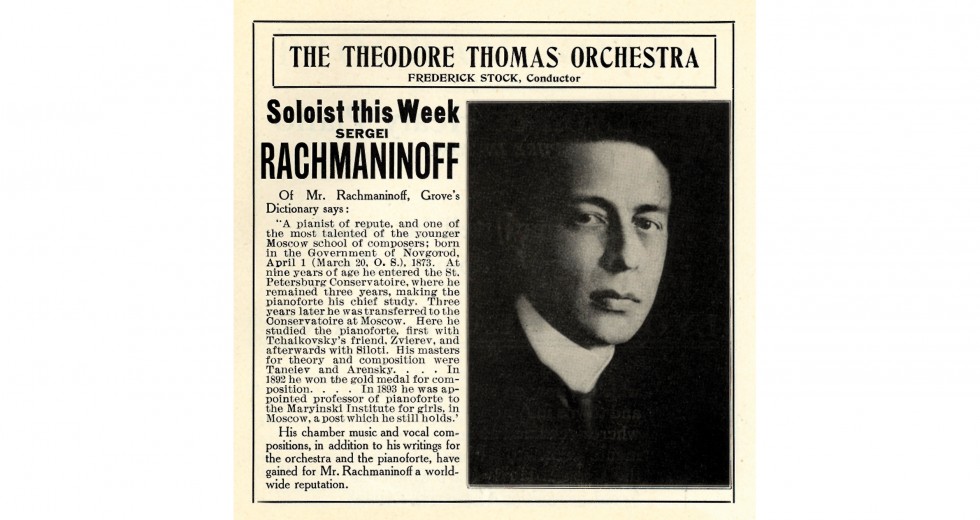
Sergei Rachmaninov made his first appearances with the Chicago Symphony Orchestra on December 3 and 4, 1909, conducting his Isle of the Dead and performing as soloist in his Second Piano Concerto with Frederick Stock conducting.
“Mr. Rachmaninov appeared in three different roles on yesterday’s program as a creative musician (a composer, as a conductor, and as a pianist), in all three capacities he displayed unusual preeminence and gifts of a transcendent order,” wrote the critic in the Chicago Examiner. “At the conductor’s desk, [he] is a striking personality [and] the members of the Orchestra responded readily to his minutest directions.” In the concerto, “Rachmaninov made no less an artistic impression. He is endowed with a comprehensive technique, his scale passages and chord playing are clean and rapid, his tone is rich and musical, and in his concerto he displayed remarkable gifts . . . after a half dozen recalls [he] responded with his celebrated C-sharp minor prelude.”
For more than thirty years, Rachmaninov regularly appeared in Chicago, both as recitalist and with the Orchestra, performing as soloist in his four concertos and the Rhapsody on a Theme of Paganini and conducting his Third Symphony and choral symphony The Bells.
Rachmaninov’s final appearances with the Orchestra were on February 11 and 12, 1943, in Beethoven’s First Piano Concerto and his own Rhapsody on a Theme of Paganini, under the baton of associate conductor Hans Lange. “Sergei Rachmaninov evoked a series of ovations when he appeared with the Chicago Symphony Orchestra at Orchestra Hall last night,” wrote Claudia Cassidy in the Chicago Tribune. “His entrance won standing tribute from orchestra and capacity audience, his Beethoven stirred a storm of grateful applause, and his own Rhapsody on a Theme of Paganini ended the concert in a kind of avalanche of cumulative excitement.”
Image above: Sergei Rachmaninov’s program book biography from his December 3 and 4, 1909, debut performances
This article also appears here.
